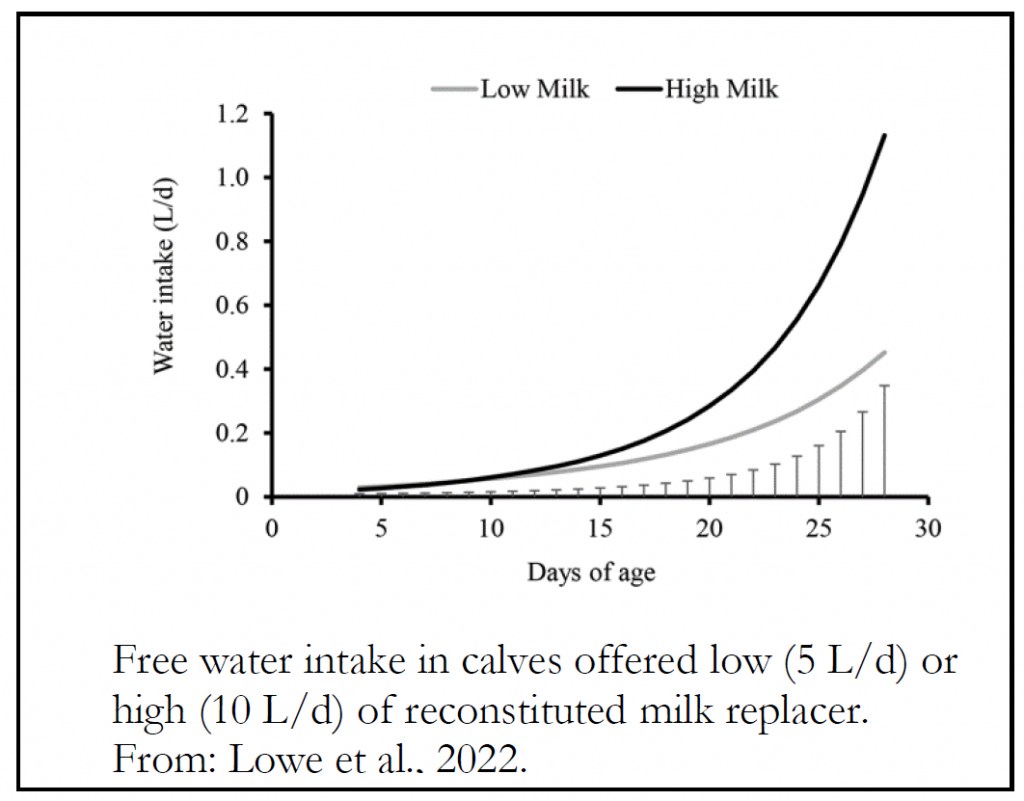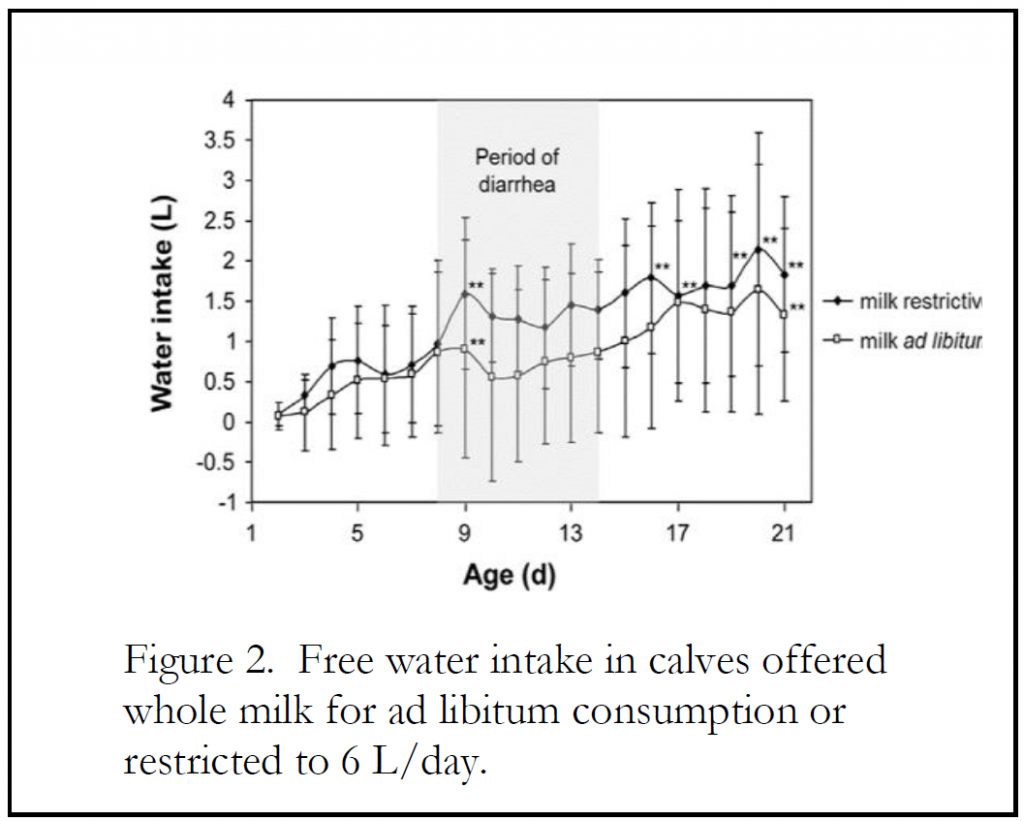Several new manuscripts, recently published in the Journal of Dairy Science have addressed calf behavior and feed consumption under various management conditions. Note that JDS is now “open access”, so it’s possible for everyone to read the articles immediately after publication. The article I’ll review in this Calf Note (link here) comes from New Zealand. The researchers evaluated the effect of drinking water provision on behavior and growth of young calves. Of course, we recommend offering water to young calves as soon as 3 days of age, but on too many farms, calves aren’t offered free water for many days after birth. This research was also interesting in that the researchers offered two levels of milk feeding – 5 or 10 liters of milk per day. It’s often thought that if calves are fed high levels of milk, they’ll drink less water, because they are “getting enough” water from the milk (or milk replacer). Therefore, this research addressed an interesting bit of information regarding water consumption in young calves.
In this study, calves were fed either 5 or 10 L of reconstituted milk replacer/day and without or with water. Calves that had access to water could drink at any time. Calves started the study at an average of 5 d of age and were housed in groups of 4 to 8 calves in a pen that was bedded with shavings.
Water intake is shown in Figure 1. Some calves began drinking measurable amounts of water by 4 days of age and the amount of water consumed increased with advancing age, particularly after 20 d of age. Calves fed 10 L of milk replacer consistently drank more free water, though the amount of water consumed in milk replacer was markedly higher.

The authors also reported that water intake increased with increasing ambient temperature. For every 1°C increase in temperature, there was an 8% increase in water intake.
Calves fed 10 L of milk replacer per day consumed more water in this study. This is opposite of other findings in the published literature. For example, Wenge et al. (2013) reported that calves fed milk ad libitum consumed LESS milk than calves fed 6 L of whole milk per day (see Figure 2).
It’s not possible to know for certain why such different responses were observed. However, one interesting difference between the two studies was the liquid being fed. In the German study by Wenge et al. (2013), calves were fed whole milk. In the New Zealand, calves were fed milk replacer that was reconstituted to 150 grams per liter (15% solids). Further, the milk replacer used contained 26% CP, 44% lactose and only 10% fat. It’s possible that differences in osmolality between the milk replacer and whole milk resulted in a greater need to calves to drink water, particularly when more milk was consumed by calves (i.e., 10 L/d). Also, it’s not known if the protein in the milk replacer was properly balanced with amino acids and was in the proper proportion to the energy in the diet. Excess protein consumed by calves must be excreted via the kidneys and calves need water to rid themselves of the excess nitrogen. More research could help us understand whether differences in feed formulation resulted in different intakes of free water.

Summary
Even within the first few days of life, calves will drink water if it is available. They’ll drink more water in warmer weather. And, it seems that calves fed 10 L/d of high solids, high protein milk replacer will drink more water than calves fed half that amount, unlike calves with ad libitum access to whole milk, which drank less water than calves fed 6 L/d. All of these studies point out the importance of feeding water early in life to young calves.
References
Lowe, G. L., M. A. Sutherland, M. Stewart, J. R. Waas, N. R. Cox, and K. E. Schütz. 2022. Effects of drinking water provision on the behavior and growth rate of group-housed calves with different milk allowances. J. Dairy Sci. 105. https://doi.org/10.3168/jds.2021-21304.
Wenge, J., I. Steinhöfel, C. Heinrich, M. Coenen, and L. Bachmann. 2014. Water and concentrate intake, weight gain and duration of diarrhea in young suckling calves on different diet. Livest. Sci. 159:133-140. https://doi.org/10.1016/j.livsci.2013.11.004.